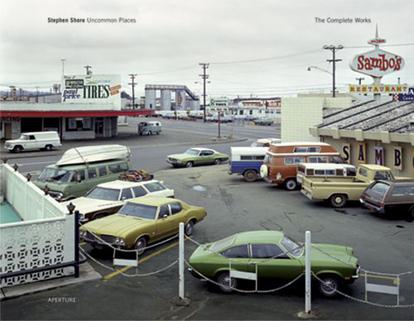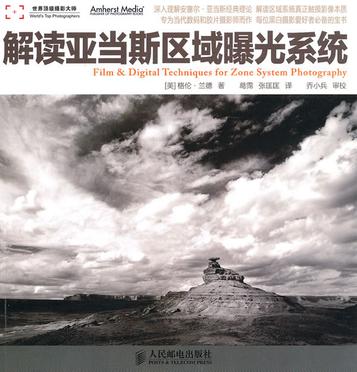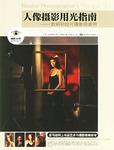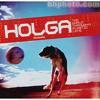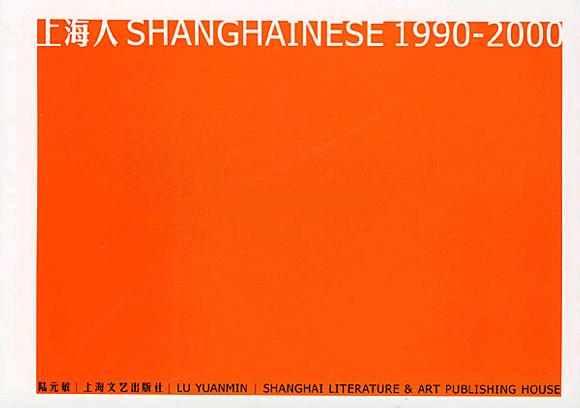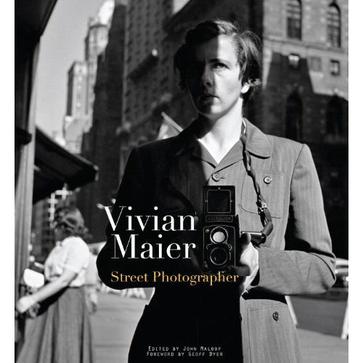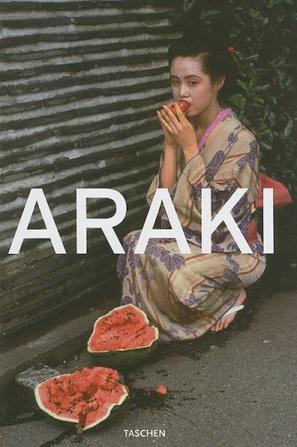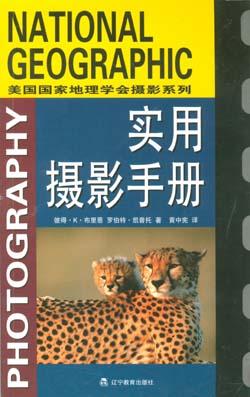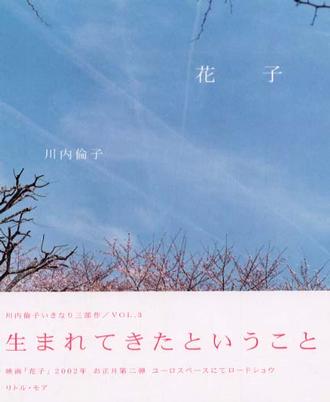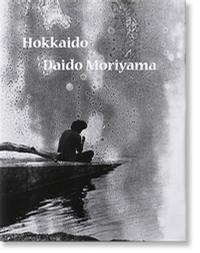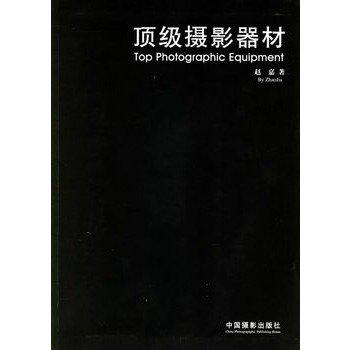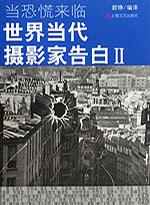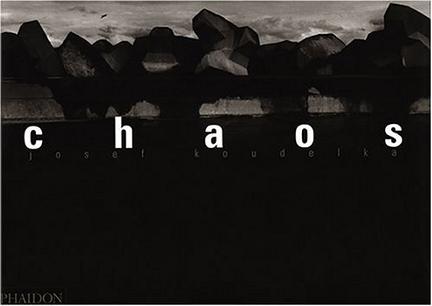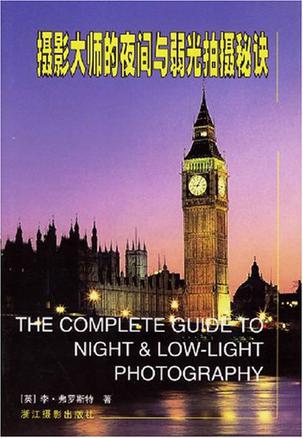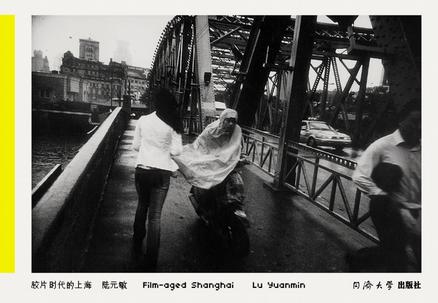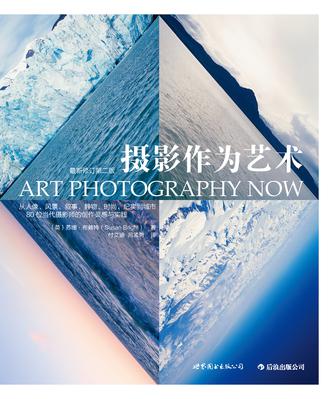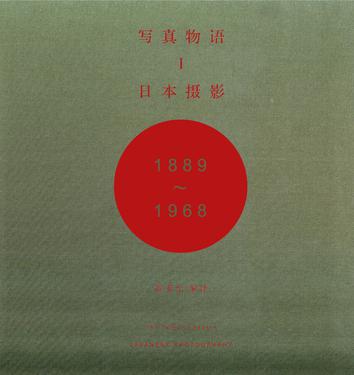欢迎来到相识电子书!
标签:Photography
-
Uncommon Places : The Complete Works
就是在平凡中看出令人感動要素的大片幅照色照片集。 -
解读亚当斯区域曝光系统
《解读亚当斯区域曝光系统》以浅显易懂的语言为你讲述亚当斯的经典理论——区域曝光,通过结合传统和数字影像的特点,讲解区域曝光系统原理,介绍如何在具体拍摄中认识并控制变量的方法,将区域系统合理地应用于影像制作当中,从而进行精确预视,精确控制图像对比度及影像质量。此外,《解读亚当斯区域曝光系统》还介绍了影像输出的相关技术。 《解读亚当斯区域曝光系统》可供摄影相关专业高年级学生学习使用,也适合严肃的摄影发烧友及专业新闻纪实摄影师、专业人像摄影师、时尚摄影师使用参考。 -
人像摄影用光指南
《人像摄影用光指南:数码和胶片摄影师通用》涵盖传统胶片摄影和最新版数字图像的一流专业技术,如何为人像摄影工作室选择高质量的照明设备,掌握光比的概念,学会如何使用“平方反比律”,经典用光模式以及如何建立这些模式,为不同的拍摄对象设计更加灵活实用的光布组合,如何选择有创意的背景并为其正确照明,高调用光和低调用光的控制技巧,在摄影工作室内模拟日光的技巧,创作具有“好莱坞”剧照风格的人像,更多的如商务照、封面照、魅态人像和结婚照等等。 -
HOLGA-THE WORLD THROUGH A PLASTIC LENS
规格: 尺寸: 17.3cm x 17.3cm x 3.5cm (6.8in x 6.8inx 1.4in) 全书共308页, 书面以仿Holga外皮质地钉装 由Holga大师Adam Scott编辑 全书超过500张耀目照片, 来自世界不同地方超过150位 Lomographer拍摄 由Lomography亲身挑选最奇怪最有趣的Holga秘技 tips n’ tricks 仔细介绍各式Holga玩法: 配合colorsplash和滤镜, 35mm格式, 模拟全景拍摄, 重复曝光, x-pro及更多! 包括来自世界不同地方的Holga用家的档案并和你分享他们的心得 -
上海人1990-2000
照片里的人,都是上海人。说到上海人,过去的就是大亨、政客、商贾、红伶、冒险家,鸳鸯蝴蝶、夜色撩人,而现在的,白领、小资、红马夹,新天地流光溢彩,陆家嘴车水马龙,都说上海是风花雪月的,人们总是津津乐道于上海的音乐细节,在那些华丽和繁荣的表象下,虚构放大着跌宕起伏,来历不明的神话故事,如果不沉下心细看,难免会无视那沉郁的苍穹下贴肤痛痒的人生。 我看着照片上的这些人和他们所在的环境,感觉到亲切、熟悉,同时也感到巨大的陌生,见得越多,越觉得在这一切下面肯定有广阔更深邃的事物是我没有见到,难以接近的,我时时意识到它们的存在。人间万象,纷繁多姿,没有这种无限的多样性就没有上海人,他们琐屑微渺的喜怒哀乐,冷眼辗转的灵肉浮沉,深如海,不可测。 -
Vivian Maier
Product Description A good street photographer must be possessed of many talents: an eye for detail, light, and composition; impeccable timing; a populist or humanitarian outlook; and a tireless ability to constantly shoot, shoot, shoot, shoot and never miss a moment. It is hard enough to find these qualities in trained photographers with the benefit of schooling and mentors and a community of fellow artists and aficionados supporting and rewarding their efforts. It is incredibly rare to find it in someone with no formal training and no network of peers. Yet Vivian Maier is all of these things, a professional nanny, who from the 1950s until the 1990s took over 100,000 photographs worldwide—from France to New York City, to Chicago and dozens of other countries—and yet showed the results to no one. The photos are amazing both for the breadth of the work and for the high quality of the humorous, moving, beautiful, and raw images of all facets of city life in America’s post-war golden age. It wasn’t until realtor and amateur historian John Maloof stumbled upon a box of anonymous negatives in a Chicago auction house just a few years ago that any of her marvelous work saw the light of day. Presented here for the first time in print, Vivian Maier: Street Photographer collects the first wave of the best of her incredible body of work—much of which still hasn’t been enlarged or in some case even developed into negatives. Hidden treasures like this don’t come along every day, and powerHouse is excited and honored to present this astounding body of never-before-seen work to the public at large. About the Author There is still very little known about the life of Vivian Maier. What is known is that she was born in New York in 1926 and worked as a nanny for a family on Chicago’s North Shore during the 50s and 60s. Seemingly without a family of her own, the children she cared for eventually acted as caregivers for Maier herself in the autumn of her life. She took hundreds of thousands of photographs in her lifetime, but never shared them with anyone. Maier lost possession of her art when her storage locker was sold off for non-payment. She passed away in 2009 at the age of 83. John Maloof is a historian, street photographer, and former real estate agent from Chicago’s Northwest Side. He discovered the first negatives of Vivian Maier’s work in 2007 while compiling a book about the history of the neighborhood where he grew up. -
Araki
Taschen 25週年特別版! Nobuyoshi Araki荒木經維是近年來最受爭議的攝影大師,對於批評他的人而言,他的作品似乎總是情色與女性厭惡貶低者,不過欣賞他的作品的人則說他是攝影界一個激進主義者和一個革命家。荒木經維被譽為「找尋日本固有良知」的攝影大師,當他開始踏入攝影界之初,他就花費相當多其他的時間以攝影去經驗他身邊的生活,不管是過去與現在、他的所處環境與情感,如果想要深入瞭解荒木經維,這本書是相當值得收藏的。書中不僅有他相當多精彩的經典攝影作品,也包括了詳細的生平與一些訪談紀錄,也介紹了他之前出版過的一些攝影專書的評價,書中可以看到荒木經維真實的一面,這些作品不僅有身處東京的生活、擄獲讀者童心的孩子嬉戲、也包括了一些具爭議的作品,包括枯萎與盛開的花系列與他癌症,美麗的女性的親密裸體,其中也紀念了他逝去妻子的作品。 -
Genesis
“In Genesis, my camera allowed nature to speak to me. And it was my privilege to listen.” —Sebastião Salgado On a very fortuitous day in 1970, 26-year-old Sebastião Salgado held a camera for the first time. When he looked through the viewfinder, he experienced a revelation: suddenly life made sense. From that day onward—though it took years of hard work before he had the experience to earn his living as a photographer—the camera became his tool for interacting with the world. Salgado, who “always preferred the chiaroscuro palette of black-and-white images,” shot very little color in his early career before giving it up completely. Raised on a farm in Brazil, Salgado possessed a deep love and respect for nature; he was also particularly sensitive to the ways in which human beings are affected by their often devastating socio-economic conditions. Of the myriad works Salgado has produced in his acclaimed career, three long-term projects stand out: Workers (1993), documenting the vanishing way of life of manual laborers across the world, Migrations (2000), a tribute to mass migration driven by hunger, natural disasters, environmental degradation and demographic pressure, and this new opus,Genesis, the result of an epic eight-year expedition to rediscover the mountains, deserts and oceans, the animals and peoples that have so far escaped the imprint of modern society—the land and life of a still-pristine planet. “Some 46% of the planet is still as it was in the time of genesis,” Salgado reminds us. “We must preserve what exists.” The Genesis project, along with the Salgados’ Instituto Terra, are dedicated to showing the beauty of our planet, reversing the damage done to it, and preserving it for the future. Over 30 trips—travelled by foot, light aircraft, seagoing vessels, canoes, and even balloons, through extreme heat and cold and in sometimes dangerous conditions—Salgado created a collection of images showing us nature, animals, and indigenous peoples in breathtaking beauty. Mastering the monochrome with an extreme deftness to rival the virtuoso Ansel Adams, Salgado brings black-and-white photography to a new dimension; the tonal variations in his works, the contrasts of light and dark, recall the works of Old Masters such as Rembrandt and Georges de La Tour. What does one discover in Genesis? The animal species and volcanoes of the Galápagos; penguins, sea lions, cormorants, and whales of the Antarctic and South Atlantic; Brazilian alligators and jaguars; African lions, leopards, and elephants; the isolated Zo’é tribe deep in the Amazon jungle; the Stone Age Korowai people of West Papua; nomadic Dinka cattle farmers in Sudan; Nenet nomads and their reindeer herds in the Arctic Circle; Mentawai jungle communities on islands west of Sumatra; the icebergs of the Antarctic; the volcanoes of Central Africa and the Kamchatka Peninsula; Saharan deserts; the Negro and Juruá rivers in the Amazon; the ravines of the Grand Canyon; the glaciers of Alaska... and beyond. Having dedicated so much time, energy, and passion to the making of this work, Salgado likens Genesis to “my love letter to the planet.” Whereas the limited Collector’s Edition is conceived like a large-format portfolio that meanders across the planet, this unlimited book presents a selection of photographs arranged in five chapters geographically: Planet South, Sanctuaries, Africa, Northern Spaces, Amazonia and Pantanal. Each in its own way, this book and the Collector’s edition—both edited and designed by Lélia Wanick Salgado—pay homage to Salgado’s triumphant and unparalleled Genesis project. The world premiere of Sebastião Salgado: Genesis will open at the Natural History Museum in London on April 11, 2013. The exhibition builds on the Museum’s reputation as the home of the planet’s best nature photography. For further information and to book tickets please go to www.nhm.ac.uk/salgado.Additionally, from May 14th, a special portfolio of plantinum prints fromGenesiswill be shown atPhillipsHowick Placegallery inLondon. Worldwide venues for the Genesis exhibition: The Natural History Museum, London, UK - April 11 through September 8, 2013 The Royal Ontario Museum, Toronto, Canada - May 2 through September 2, 2013 Ara Pacis Museum, Rome, Italy - May 15 through September 15, 2013 Jardim Botânico, Rio de Janeiro, RJ, Brazil - May 28 through August 25, 2013 Musée de l’Elysée, Lausanne, Switzerland - September 21, 2013 through January 12, 2014 La Maison Européenne de la Photographie (MEP), Paris, France - September 25, 2013 through January 5, 2014 SESC Belenzinho, São Paulo, SP, Brazil - September 9 - November 2013 -
实用摄影手册
精彩内容包括: ・拍人物,风景和野生动物 ・十位顶级美国国家地理学会摄影师提供如何拍照的小秘诀 ・选择正确胶片,滤镜和曝光一览表 ・相机、镜头和保养 ・使用现场光线和闪光灯 ・有效构图的小秘诀 ・电脑和摄影 ・旅行小秘诀和装备 ・摄影相关网站 -
花子
此書是佐藤真所拍的紀錄片「花子」的攝影集,描述在京都府南端大山崎町,具有重度智能障礙的今村花子總是把晚餐吃剩的東西排列成塌塌米和于蘭盆會的樣子,被母親說是「吃東西的藝術」。攝影集是以與電影不同的角度來記錄今村家的點點滴滴,觀察重度智能障礙的花子在今村家的生活。 -
Hokkaido Daido Moriyama
森山大道的《北海道》画册。29×37厘米的超大版本,共640页,非常重,印放非常精致,颗粒完美,全世界限量发行1500本,价格昂贵。 -
人像摄影摆姿指南-数码和胶片摄影师通用
本书要点: 摆姿基本规则、头的位置、身体的摆姿、足部摆姿、手部摆姿、坐姿等。 面部摆姿:面部分析、眼睛、嘴巴、鼻子、马巴、发型与分妆。 影响摆姿的摄影技巧:焦距与透视、镜头与景深、聚焦、相机高度与透视、相机倾斜、摄影光圈、快门速度。 构图技巧:三分法则、黄金分割定律、方向、线条、形状、紧张与平衡、视觉重点、设计概念。 表情处理:拍摄前的咨询、个性心理、赞美、舒适等。 摆姿策略:观察拍摄对象、引导摆姿、积极摆姿、演示摆姿、两位大师的摆姿策略。 群像摆姿:摆姿层次、头的位置、摆姿对话、小群体、大群体、相连形状、手的摆姿、服装协调、群体表情、聚焦、应该避免的问题。 摄影室与户外照明:摄影室照明、平光与狭光照明、照明比例、羽化照明、时装照明、现场照明。 短正摆姿的技巧:柔焦与漫射、修描、纠正特定问题、个别问题处理。 人像摆姿欣赏。 -
顶级摄影器材
《顶级摄影器材》内容简介:顶级摄影器材的价值多不在于器材本身,而在于它可以更轻松地记录更加优质的影像。和其他的艺术形式相比,摄影更着力于是一项记录时间的艺术,如果你希望几十年后看到现在的照片还会被影像中细腻的情感和熠熠生辉的细节打动,你就应该多了解了解顶级摄影器材。 当然,顶级摄影器材本身的吸引力不止于此。怀瑾握瑜,迤逦而行,其实不仅仅是很多初学摄影者热衷的幻想,对于摄影老手以及职业摄影师也有相当的吸引力。这种想法一方面在相当程度上使摄影者更长久地保持了摄影的热情,另一方面也促使摄影器材厂家在技术革新上不断前行,以求提供性能更加卓越、体积更加轻巧、操作更加便利的摄影器材。 -
当恐慌来临(世界当代摄影家告白Ⅱ)
继2001年出版的“世界当代摄影家告白”,顾铮先生又为我们辑录了这本珍贵的访谈。从开首的曼·雷到最后的横江文宪,涵括上世纪初直抵当今的二十多位摄影家。本书内容丰富,图文并茂,具有很强的可读性。 -
摄影大师的夜间与弱光拍摄秘诀
《摄影大师的夜间与弱光拍摄秘诀》讲述如果你是位摄影爱好者,又不满足于只在阳光灿烂的晴天或晴空万里的夏天里拍摄,想找点有刺激的场景,比如,在夜间和弱光条件下拍摄,那你就得掌握更多的摄影知识。《摄影大师的夜间与弱光拍摄秘诀》就旨在此条件下拍摄的照片类型,以通俗易懂的方式说明应如何亲手拍摄出相似效果的照片。它首先讲述照相机的设备,其次全面探讨暴光和测光问题,最后详细介绍夜间和弱光拍摄的题材和应用技巧。另外,书中还附设了250多张照片。在《摄影大师的夜间与弱光拍摄秘诀》的帮助下,相信你一定能成为一名更加出色的摄影师。 -
胶片时代的上海
1. 作者自述——“胶片时代的上海”,这是陆元敏首次应邀写出自己的摄影心情: 我一直幻想一台眨一下眼就能拍摄的相机,LOMO相机在大多数情况下不用取景就可拍摄。它像是眼睛的延伸物,和眼睛有着一根看不见的连线,用它常常能拍到预想中的、甚至比预想得更好的影像......我又是一个有着反复拍摄热忱的人,生活安逸、身体健康,有很多的闲暇时间,只是不断流逝的时间使我心慌。当一个摄影家用相机抓住时光,拍取瞬间,带入暗房,巫术般地在微光下再现瞬间时,摄影术的整个过程都充满了神奇,只要享受它便会其乐无穷。 ...... 2. 作品——101幅,是陆元敏第一次使用Lomo相机,也是最后一次使用黑白胶片拍摄的作品 (拍摄于2005-2007年间) 3. 问与答——在网上征集到的11位豆友同陆元敏的38个对谈记录,涉及城市,生活和摄影: 您主要的拍摄对象是上海人,您觉得这些年来,上海人有什么大的变化? 您对自己的照片有过失望和觉得苦闷的时候么?您是怎么越过这个阶段的? 如何有一双慧眼,可能与每个人对生活的敏感程度不同有关,但是有啥适用大众的方法可以借鉴吗? 怎样才能保持影像的活力? 想知道您对喜爱街头摄影的年轻人有些什么可以说的? ...... -
摄影作为艺术
80位最受瞩目的当代摄影师 精选275幅经典摄影作品 引领读者以全新视界与更多陌生作品相遇 ................................................................... 本书介绍了80位全世界最重要、也最受瞩目的 摄影师,并以人像、风景、叙事、静物、时尚、纪实及城市等七个章节,深入探索各种摄影类型的起源于发展,以及这些顶尖摄影实践者独特的拍摄主题、风格与方法。 在每篇文章中,除了有作者对于摄影师的精辟介绍和剖析外,难得一见的是,每位摄影师都针对作品亲身解说拍摄灵感、创作手法以及执行过程中遭遇的各种困难。 新版中,作者新增了“摄影的转变”篇章,引导读者俯瞰近年来世界摄影发展的演变,进一步理解当代摄影风潮。 ...................................................... 了解当代摄影的必读书。 ——《艺术观察》(Art Review) 打开这本书,惊艳影像俯拾即是。 ——《英国独立报》(The Independent) 在过去的一个世纪里,摄影不仅仅塑造着艺术,甚至统治着艺术。苏珊•布赖特的《摄影作为艺术》精选80位当代顶尖摄影师的作品,为你展现摄影统治下的艺术帝国。 ——中西部书评(midwestbookreview.com) 足不出户,一本书带你畅游80所顶尖画廊。 ——Amazon读者,Chris Kitze 文字隽永,发人深省,摄影艺术的完美调查。 ——读者 -
写真物语I:日本摄影1889—1968
▎编辑推荐 ★日本摄影界一致推荐! ★聚集评论家、美术馆、摄影师家属、摄影师、策划人多方力量,收录19位大师70幅代表作60段经典语录 ★著名新锐摄影策划人、评论家黄亚纪倾力打造(全套四册) ※19位“大师的大师”,开启日本摄影的兴盛旅程※ 福原信三 渊上白阳 盐谷定好 野岛康三 小石清 安井仲治 中山岩太 椎原治 瑛九 山本悍右 滨谷浩 土门拳 桑原甲子雄 植田正治 东松照明 奈良原一高 川田喜久治 细江英公 石元泰博 ◆日本摄影大师关系图+大师友谊趣事+日本摄影画册索引+日本摄影年表……开创性整理日本摄影相关资料 ▎内容简介 这套书透过摄影大师的作品,把日本摄影的面貌原汁原味地呈现在读者面前。而这也是读者在阅读数本日本大师的经典文集之后,甚或之前,对风靡全球的日本摄影更完整的必要认识。 第一册“日本摄影1889—1968”记录的是日本当代摄影从开端到变革开始的时期。编者选取多位摄影艺术家的代表作和语录、思考随笔或访谈,向读者展示日本当代摄影从初级到在国际上初露锋芒的过程。选录的摄影家的作品及资料从20世纪初福原信三、渊上白阳到1960年代末崭露头角的荒木经惟、森山大道,非常详尽。 文献式的梳理,让读者对日本摄影史的早期发展有一个全景式的了解,意简言赅,洋溢文采的诠释与演绎,深化了摄影作为独立艺术类型的思想与意义。近百幅高质量的各时代摄影大师的代表作,具有很高的阅读及收藏价值。 ▎媒体评论与名人推荐 如果说20世纪80年代之前的日本摄影代表了一个变化动荡时代的美学追求与文化心理,此后出场的日本摄影家似乎有意回避了情绪性的表达而更趋近观念的表达,其作品也更多有一种哲学思辨的观念色彩与理性的冷静。 ——顾铮(摄影家、摄影评论家) 意简言赅,洋溢文采的诠释与演绎,不仅深化了摄影作为独立艺术类型的思想与意义,同时也是伴随后继者坚定向前的珍贵动力。我诚挚第推荐此书,特别是对有志于摄影学术与创作实务的朋友们。 ——沈昭良(台湾摄影家) 书中交叠的许多日本摄影家名字,仿佛是漫长旅途中经过一站站的小镇站名,让我掉进那片无尽的影像荒原里……谢谢你整理了这些在我旅途中出现的美好风景,而我看着看着,竟也就走到了这里…… ——郭英声(台湾艺术家) 透过编者有系统的整理,读者的收获将不只是写真(作品)里的物语,更包括了写真(史)的物语。这本书推荐给想要了解日本视觉文化的人。 ——江明玉(《日日》杂志中文版) 某种意义上,摄影师无论拍什么,其实都是在掂量人与人之间的关系……森山的寡欢之态变成文字和影像,就成了他的办法和技术,这是进入森山独特美学的入口之一。 ——朱白(评论家) 摄影,从未来突然来到。——奈良原一高 身在某一天某一处,是摄影家的绝对条件。——石元泰博 在对成年人的不信任感中成长的我们战后派,不知被谁称作了“不信的世代”。对不相信任何事物的我而言,唯一让我咀嚼到真实滋味的,是肉眼所能见的事物。于是很快地,我与相机相遇了,成为摄影的囚犯。 ——东松照明
热门标签
下载排行榜
- 1 梦的解析:最佳译本
- 2 李鸿章全传
- 3 淡定的智慧
- 4 心理操控术
- 5 哈佛口才课
- 6 俗世奇人
- 7 日瓦戈医生
- 8 笑死你的逻辑学
- 9 历史老师没教过的历史
- 10 1分钟和陌生人成为朋友

